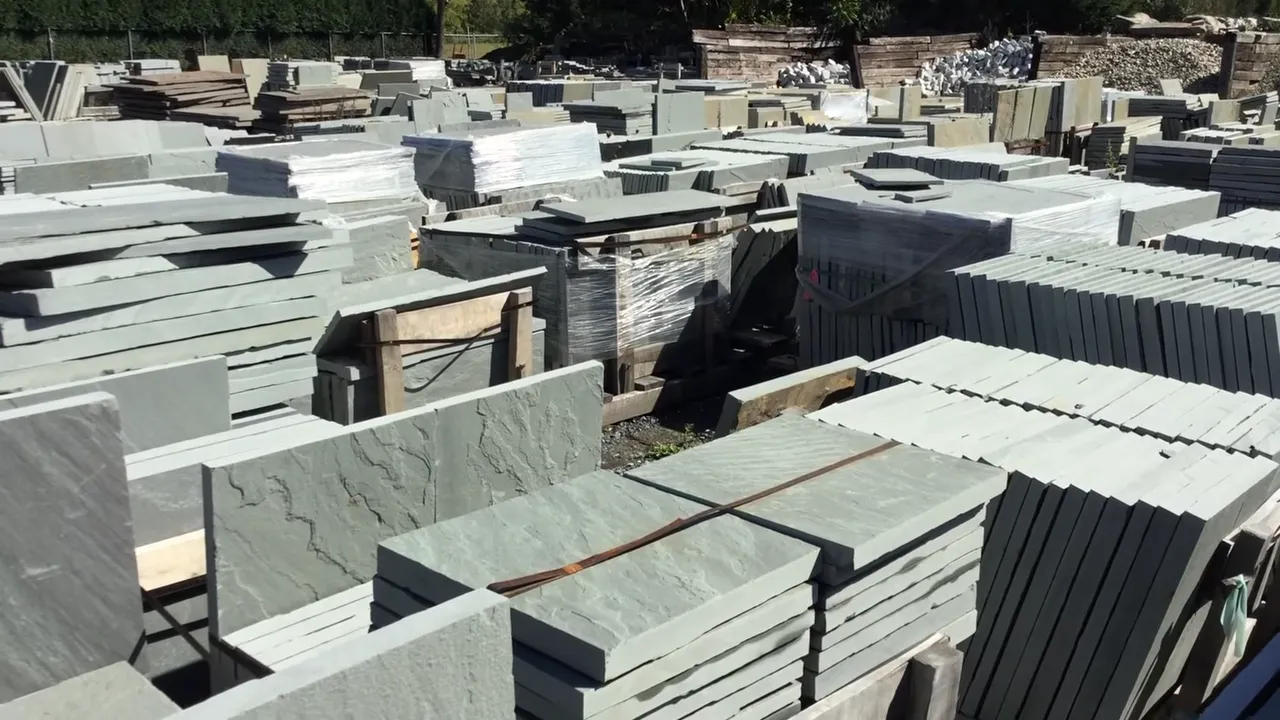The realms of architecture and design continuously evolve, yet the significance of selecting the apt stone material remains timeless. Both Slate and Bluestone, thanks to their distinctive attributes, have cemented their places in the hearts of homeowners, designers, and architects alike.
Slate, a fine-grained metamorphic rock, and Bluestone, a sandstone or basalt variant, differentiate mainly in their origins, aesthetics, durability, and applications. These differences can influence one’s choice depending on the desired outcome or application.
Deciphering the nuances of these stones goes beyond mere visual appeal. It taps into the technical aspects, durability factors, and the ambiance each stone can imbue within a space.
Origins and Formation
Slate
Geologic Background and Formation Process Slate is a metamorphic rock, which means it has undergone transformation by heat, pressure, or other natural agencies. Initially, it begins its life as shale, a sedimentary rock. Over time, with the right amount of pressure and heat, this shale turns into the slate. This transformation doesn’t happen overnight. Instead, it’s a result of eons of geologic activity that compacts and compresses the shale, altering its structure at the molecular level.
Regions Known for High-Quality Slate Extraction Certain parts of the world are renowned for their premium slate, including:
- North Wales in the UK, especially the town of Bethesda.
- Parts of Pennsylvania and Vermont in the USA.
- Porto de Son in Spain.
- Regions in Brazil and parts of Asia.
Bluestone
How Bluestone Forms and its Geologic Background Bluestone is a common name for many types of stone, but predominantly, it refers to a form of sandstone or basalt. Its formation is tied closely to ancient geological processes. Sandstone bluestone originates from ancient riverbeds or beaches where sand accumulated and was buried and compacted over time. Basalt bluestone, on the other hand, originates from volcanic activity where lava cooled and solidified.
Key Areas Where Bluestone is Predominantly Mined Bluestone extraction is concentrated in:
- Victoria in Australia, especially in and around Melbourne.
- The Catskill Mountains in New York State, USA.
- Certain parts of Ireland and New Zealand.
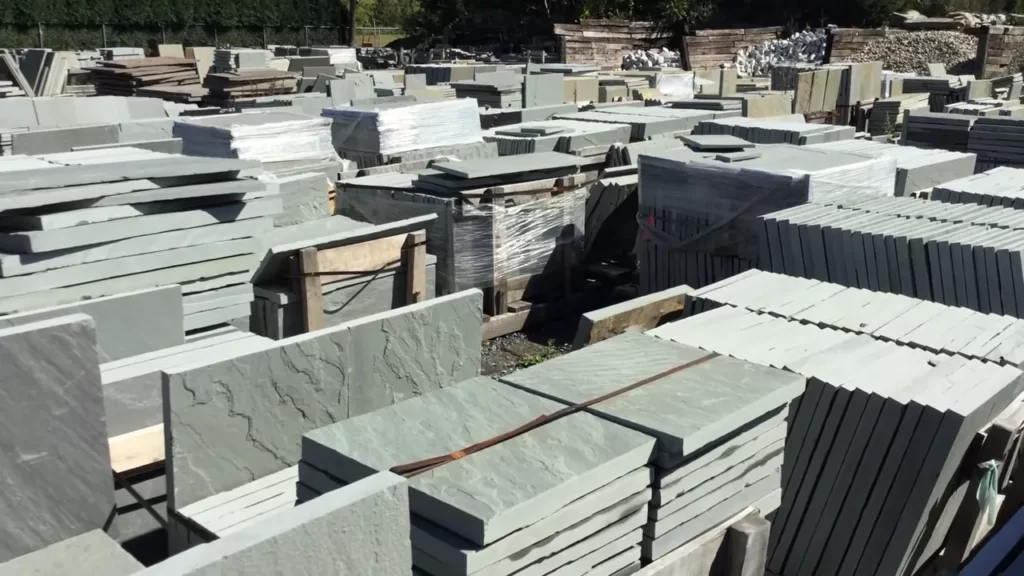
Appearance and Aesthetics
Slate
Typical Color Range and Surface Texture Slate’s appearance is one of muted elegance. It primarily presents in shades of:
- Gray
- Blue-gray
- Green
- Purple
- Black
Its texture can be smooth but often has a cleft surface that can be felt when touched.
How it Enhances the Aesthetics of a Space Slate’s subdued hues and unique texture lend a natural, earthy vibe to spaces. It’s versatile and can complement both traditional and contemporary design aesthetics. A slate floor, for instance, can ground a space, providing a natural foundation upon which other design elements can build.
Bluestone
The Unique Shade Range and its Surface Finish Bluestone’s color palette is somewhat variable depending on its type. While it often showcases a deep blue-gray, it can also come in:
- Green
- Brown
- Lilac shades
Its surface can range from rough to smooth, based on the finish applied.
Impact on the Overall Ambiance of an Area Bluestone has an undeniable charisma. Its rich colors can anchor a space, providing depth and contrast. Especially in outdoor settings like patios or pathways, bluestone’s robust nature and beautiful hues can create a stunning visual experience.
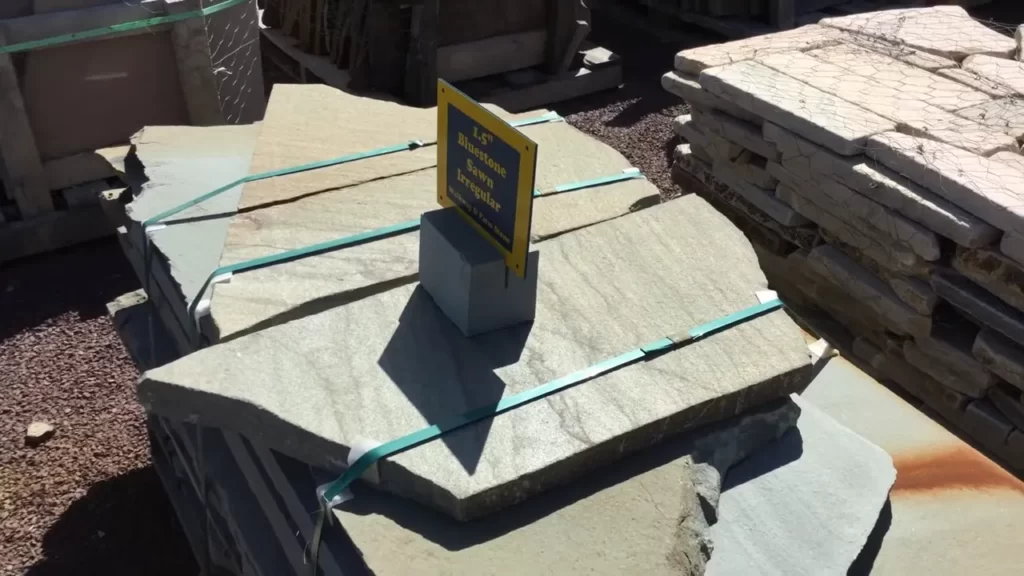
Durability and Lifespan
Slate
Expected Lifespan When Used in Various Installations Slate is known for its longevity. When properly installed and maintained:
- Roofs can last over 100 years.
- Floors can serve for decades with minimal maintenance.
Factors Affecting its Durability However, slate’s durability can be compromised by:
- Exposure to extreme weather conditions.
- Physical impact, which can cause chipping or breaking.
- Improper installation or use in unsupported structures.
Bluestone
How Long Bluestone Typically Lasts Like slate, bluestone is lauded for its durability. Outdoor installations, like pathways or patios, can last many decades.
Elements That Might Affect its Longevity Factors that can impact its lifespan include:
- Chemical exposure which can deteriorate its surface.
- High traffic areas might witness wear over time.
- Environmental factors such as extreme freeze-thaw cycles.
Both Slate and Bluestone, with their unique characteristics, stand tall as preferred choices for various architectural and design projects. Their timeless beauty, combined with remarkable durability, makes them favorites among experts in the field.
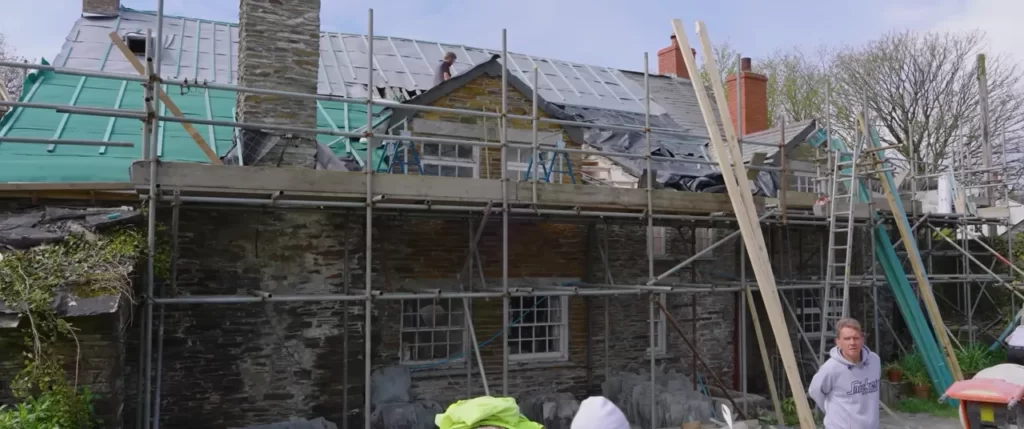
Maintenance and Care
Slate
Cleaning and Care Recommendations
Slate, with its natural beauty, requires routine maintenance to retain its appearance. Some key steps include:
- Regularly sweeping or vacuuming to remove debris.
- Wiping with a damp cloth or mop using a mild detergent.
- Avoiding acidic or abrasive cleaners that can damage the surface.
Common Issues and How to Address Them
Despite slate’s durability, some issues might arise:
- Staining: Spills should be promptly cleaned. For set-in stains, a stone-specific cleaner can be effective.
- Chipping: Minor chips can often be smoothed using fine-grit sandpaper.
- Flaking: This occurs due to the natural layering of slate. Regular sealing can reduce this effect.
Bluestone
Tips for Maintaining Bluestone’s Appearance
To ensure bluestone maintains its pristine look:
- Use water and mild soap for regular cleaning.
- Seal the surface periodically to guard against stains and moisture.
- Avoid power-washing which might erode the stone’s surface.
Challenges in Upkeep and Their Solutions
- Scratching: Protect bluestone surfaces using pads under furniture.
- Stains: Blot (don’t rub) spills immediately. Use a pH-neutral cleaner for tougher stains.
- Weathering: Regular sealing can combat the effects of weather on outdoor installations.
Cost and Affordability
Slate
Average Cost and Factors Influencing Its Price
The cost of slate can vary, but on average:
- Flooring tiles can range from $2 to $10 per square foot.
- Roofing materials might be between $4 to $8 per square foot.
Factors affecting slate’s price:
- Origin: Imported slate can be pricier.
- Thickness: Thicker slabs are often more expensive.
- Grade: Higher quality slate comes at a premium.
Value Proposition for Homeowners and Builders
While slate might have a steeper upfront cost, its benefits include:
- Longevity: Reducing the need for replacements.
- Aesthetic Appeal: Offering a unique and timeless look.
- Durability: Fewer repairs or maintenance expenses in the long run.
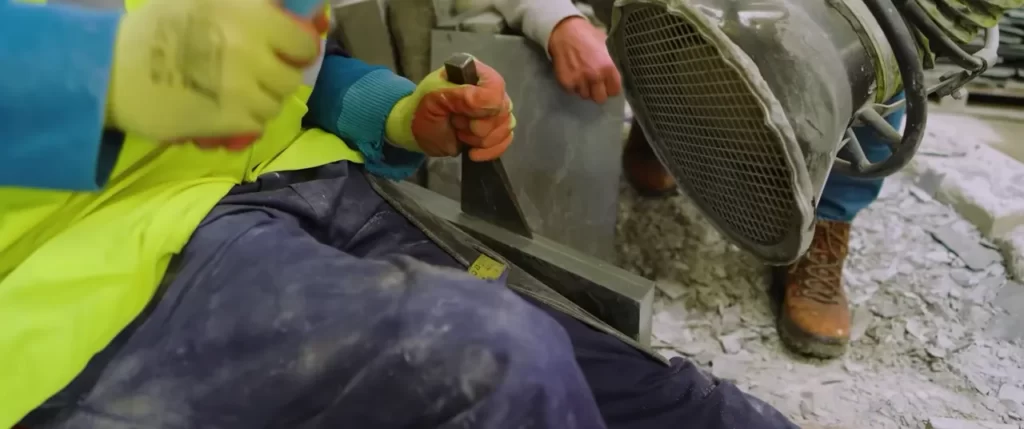
Bluestone
Price Range and Elements That Determine Its Cost
Bluestone’s cost can oscillate based on:
- Type: Basalt bluestones tend to be more costly than their sandstone counterparts.
- Finish: Polished or honed finishes can command higher prices.
- Size and Thickness: Larger, thicker slabs can be more expensive.
On average, expect to pay:
- Between $4 to $8 per square foot for pavers.
- $15 to $30 per square foot for countertop slabs.
Why It Might Be a Choice Worth the Investment
Bluestone’s value is evident in:
- Versatility: Suitable for both indoor and outdoor use.
- Resistance: Withstands heavy foot traffic, making it ideal for public spaces.
- Aesthetic Diversity: Offers a range of colors and finishes to match varied design preferences.
Application Areas
Slate
Common Uses in Construction and Interior Design
Slate’s versatility is showcased in its multiple applications:
- Roofing: Known for its resilience against elements.
- Flooring: Popular for both interior and exterior floors.
- Countertops: A durable and heat-resistant option for kitchens.
Benefits in Specific Application Areas
For roofing:
- Acts as a natural insulator, promoting energy efficiency.
- Offers a unique, textured appearance.
For flooring:
- Provides a slip-resistant surface.
- Holds up well against moisture.
Bluestone
Typical Areas Where Bluestone Shines
Bluestone’s strength and beauty make it a top pick for:
- Patios: Provides a natural, rustic feel.
- Pool surrounds: Its cool surface is ideal for bare feet.
- Driveways: Can endure the weight of vehicles without cracking.
Advantages of Using It in Those Specific Spots
For patios:
- A natural aesthetic that blends seamlessly with garden landscapes.
- Durability against weather changes.
For pool surrounds:
- Offers a non-slip surface, enhancing safety.
- Doesn’t absorb excessive heat, keeping it comfortable for barefoot walking.
Frequently Asked Questions
What is the primary origin of Slate?
Slate originates from shale-type sedimentary rock under low-grade metamorphic processes. Renowned regions for quality slate include parts of Europe and North America.
Is Bluestone more expensive than Slate?
Costs vary based on extraction, processing, and regional factors. Typically, the pricing of Bluestone is competitive, and in some instances, it may be priced higher than Slate due to its unique characteristics.
Which stone offers better durability?
Both stones offer impressive durability. However, specific conditions, treatments, and applications might tip the scale in favor of one over the other.
Are both stones suitable for outdoor use?
Absolutely! Both Slate and Bluestone can be used outdoors. Their resistance to environmental factors makes them favorites for patios, walkways, and pool surrounds.
How often should these stones be maintained?
While both stones are relatively low maintenance, periodic sealing and proper cleaning ensure their longevity and luster. Frequency depends on usage and environmental conditions.
Conclusion
The intricacies of Slate and Bluestone span far beyond their earthly hues and textured surfaces. While their origins narrate tales of geological marvels, their applications in modern spaces showcase a blend of functionality and aesthetics. As choices loom, the onus is on understanding the nuances, costs, and capabilities of these natural stones. The path to an informed decision winds through these subtle yet vital distinctions.
